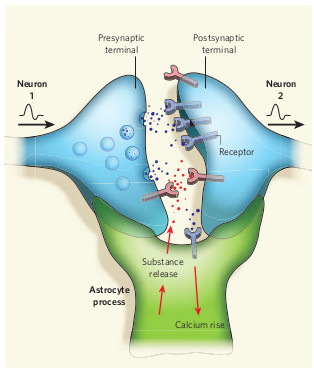Fruit Flies to Model and Test Fragile X Treatments
Boosting cAMP signaling restores memory and fixes brain-signaling defects in Fragile X models, suggesting diabetes drugs like metformin may help.
Fragile X Treatment: New Research Directions
In the wake of negative results from several high-profile clinical trials in Fragile X, we find ourselves questioning many of our previous assumptions about the nature of this disorder. After all, understanding the basic pathology of disease is critical to development of new treatments — this is true across the board, in all branches of medicine.
The Endocannabinoid System in a Mouse Model of Fragile X Syndrome
Fragile X disrupts endocannabinoid signaling. This study in mice demonstrated that correcting it may calm brain hyperexcitability and improve symptoms.
Inhibitors of STEP as a Novel Treatment of Fragile X Syndrome
STEP inhibition reversed behavioral and synaptic Fragile X deficits in mice (Neuropharmacology, 2018), highlighting STEP as a promising treatment target.
Seizures in Fragile X Syndrome and Therapeutic Potential of NMDA Receptor Antagonists
Dr. Wong studies how NMDA and mGluR receptors interact to trigger seizures in Fragile X, revealing NR2B-specific blockers as a promising targeted treatment.
What Treatments Work for FXTAS?
FXTAS affects many in our Fragile X community. Research aims to uncover its cause and guide more effective treatments.
Lovastatin Discovery in Fragile X Mice Leads FRAXA to Fund Clinical Trials
FRAXA honored Dr. Emily Osterweil for discovering that lovastatin can correct key Fragile X abnormalities. Her findings were published in Neuron.
Treatment of Fragile X Syndrome via Dopamine Enhancers and Glutamate Inhibitors
In Fragile X mice, low dopamine signaling and excessive glutamate activity were targeted with dual therapy: dopamine enhancers plus glutamate inhibitors.
Targeting mGluR-LTD to Treat Fragile X Syndrome
With FRAXA support, Dr. Kimberly Huber uncovered how mGluR signaling contributes to Fragile X, laying the foundation for major clinical advances.
Preclinical Evaluation of Serotonin Receptor Agonists as Novel Pharmacological Tools in Fragile X Syndrome
With FRAXA funding the team found that activating 5-HT7 receptors reversed excess mGluR-LTD in Fragile X mice, pointing to a new route to fix synapses.
Small Rho GTPases, a Potential Therapeutic Target for Fragile X Syndrome
Dr. MariVi Tejada from the University of Houston tested several potential therapeutic compounds in an attempt to rescue function in the mouse model of Fragile X.
Evaluation of CamKII Dependent Regulation of mGluR5-Homer Scaffolds as a Potential Therapeutic for Fragile X Syndrome
Disrupted mGluR5–Homer scaffolding in Fragile X is linked to excess CaMKII activity. Restoring this interaction could rebalance signaling and improve symptoms.
A Metabolomic Drug Efficacy Index to Test Treatments in the Fragile X Mouse
This work revealed small-molecule metabolic changes in Fragile X brains and is using them to build a drug-efficacy index for screening therapies.
Compound that Inhibits mGluR5 Corrects Signs of Fragile X in Adult Mice
A Roche and MIT study published in Neuron finds that an mGlu5 inhibitor, CTEP, can reverse many Fragile X symptoms in adult mice.
Efficient Screening for Pharmaceutical Amelioration of FXS Behavioral Deficits in Drosophila
Using a fruit-fly Fragile X model, researchers screened many drugs quickly to find those that improve behavior, speeding up potential treatment testing.
Altered Dendritic Synthesis of Postsynaptic Scaffold Protein Shank1 in Fragile X Syndrome
Loss of FMRP leads to excess synthesis of the scaffold protein Shank1 at dendrites. Elevated Shank1 may impair synaptic pruning and drive Fragile X spine pathology.
The Slack Potassium Ion channel is a Therapeutic Target for Fragile X
With $282,000 in funding from FRAXA Research Foundation, Dr. Leonard Kaczmarek and colleagues explored association of Slack channels with the Fragile X protein (FMRP).
Imaging Synaptic Structure and Function in Fragile X Mice
With $150K from FRAXA, Dr. Carlos Portera-Cailliau studied Fragile X mouse brains to examine dendrite structure and mGluR5 treatment effects.
Role of Matrix Metalloproteinases (MMP-9) in Fragile X
With a $220,000 FRAXA grant, Dr. Iryna Ethell’s team at UC Riverside uncovered MMP-9’s role in Fragile X—leading to a major treatment strategy using minocycline.
Basic Mechanisms of Disease and Potential Therapeutic Strategies
Dr. Stephen Warren’s FRAXA-funded research at Emory led to the Fragile X gene discovery and new breakthroughs using stem cells and model systems.
3 Researchers Honored at FRAXA Investigators Meeting
FRAXA’s 2008 Investigators Meeting brought together 150+ researchers from around the world to collaborate and speed new Fragile X therapies.
Glutamate Metabolism in Fragile X Mouse Brain
Dr. Mary McKenna’s FRAXA-funded study at the University of Maryland examined how mGluR activity impacts key brain pathways linked to Fragile X.
AMPAkines and BDNF in Fragile X: UCI Researchers Restore Memory Process in Fragile X
FRAXA’s $104K grant supported Dr. Julie Lauterborn at UC in studying dendritic spines and memory-related treatment targets in Fragile X mice.
Development of the Fragile X Brain: Cellular Processes Regulated by FMRP During Development
FRAXA-funded research by Dr. Peter Kind at the University of Edinburgh explored how FMRP interacts with brain development to impact Fragile X.





















